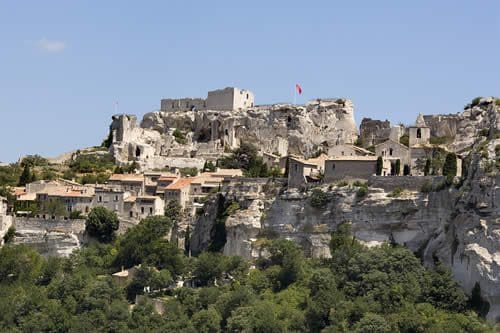I am Les Baux
Les Baux-de-Provence has a spectacular position in the Alpilles mountains, set atop a rocky outcrop crowned with a ruined castle overlooking the plains to the south. Its names refers to its site — in Provençal, a baou is a rocky spur. The village gives its name to the aluminium ore Bauxite which was first discovered there in 1821.
The defensive possibilities of Les Baux led to the site being settled early on in human history. Traces of habitation have been found dating back as far as 6000 BC, and the site was used by the Celts as a hill fort around the 2nd century BC. During the Middle Ages, it became the seat of a powerful feudal lordship that controlled 79 towns and villages in the vicinity. The lords of Baux sought control of Provence for many years. They claimed ancestry from the Magus king Balthazar and placed the Star of Bethlehem on their coat of arms.
Despite their strengths, the lords of Baux were deposed in the 12th century. However, the great castle at Les Baux became renowned for its court, famed for a high level of ornateness, culture and chivalry. The domain was finally extinguished in the 15th century with the death of the last princess of Baux, Alice of Baux.
Les Baux was later joined, along with Provence, to the French crown under the governance of the Manville family. It became a centre for Protestantism and its unsuccessful revolt against the crown (Louis XIII) led Cardinal Richelieu in 1632 to order that the castle and its walls should be demolished.













